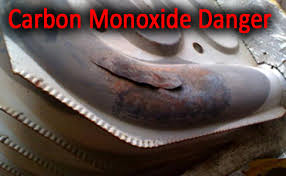 We focus on educating homeowners about the importance of regular heating maintenance, changing air filters, and gas and carbon monoxide safety. But for the most part, we don’t expect our clients to know very much about the various parts of the heating systems in their homes. That’s why we’re here.
We focus on educating homeowners about the importance of regular heating maintenance, changing air filters, and gas and carbon monoxide safety. But for the most part, we don’t expect our clients to know very much about the various parts of the heating systems in their homes. That’s why we’re here.
Still, it may be helpful for you to know a bit about a key component of your furnace—the heat exchanger. The heat exchanger is responsible for transferring heat to the air moving into your home. But it can be responsible for a major safety concern as well.
What Is a Heat Exchanger?
A heat exchanger is essentially a tube made of aluminum or steel. Today’s heat exchangers are typically paneled and curved to allows for maximum heating coverage and efficiency. Combustion takes place in the heat exchanger. After gas is ignited, heat and other byproducts (like carbon monoxide) travel up through the tube. Byproducts are released through a vent. Heat is transferred as air is sucked up from your home with a blower fan, pushed over the heat exchanger, and moved to the rooms of your home.
What Can Go Wrong with Your Heat Exchanger?
Unfortunately, a heat exchanger could, potentially, develop a crack. A crack in the heat exchanger would allow for carbon monoxide to leak into your home. While today’s heaters are designed to be as durable as possible to prevent this, it can and does happen, and you must be prepared.
What Should You Do to Maintain Your Heat Exchanger?
Our number one recommendation for anyone concerned about the safety of their heating systems is to leave any work—installation, repair, replacement, and preventative maintenance—to a technician with the proper training.
Make sure you only have technicians qualified to work on gas heating systems, and check online reviews and other certifications first. It’s not worth the lower price to pay for amateur work that could risk your safety. Often, cracked heat exchangers go unnoticed for a long time when amateur technicians are called in for work.
In addition, make sure gas and carbon monoxide detectors are up to date (less than ten years old). Change the batteries every six months and test them once a month.
Contact us at Kansas Controls Heating and Cooling to schedule your Safety and Efficiency Check for your Furnace today. 316-267-5222

